|
|
Updated as per http://biological-diversity.info/sphingidae.htm (Belize), November 2007
Updated as per Fauna Entomologica De Nicarauga, November 2007
Updated as per The Known Sphingidae of Costa Rica, November 2007
Updated as per personal communication with Ezequiel Nunez Bustos (Argentina: Misiones), July 2008
Updated as per personal communication with Jose Monzon (Guatemala); May 2009
Updated as per
AN ANNOTATED CHECKLIST OF THE SPHINGIDAE OF BOLIVIA, December, 2009
Updated as per Sphingidae (Lepidoptera) de Venezuela, Compilado por: Mar�a Esperanza Chac�n; December 2009
Updated as per CATE (description; Mocao (possibly Mocoa in Putamayo), Colombia, Rio Madeira below San Antonio, Peru; Esperanza, Bolivia; Mexico, Ecuador, Argentina);
February 18, 2011
Updated as per personal communication with Gregory Nielsen, Villavicencio, Meta, Colombia, July 3, 2011, 500m; July 9, 2011
Updated as per personal communication with Ezequiel Bustos (Shilap revta. lepid. 43 (172) diciembre, 2015, 615-631 eISSN 2340-4078 ISSN 0300-5267), January 4, 2016
Updated as per Hawk-moths (Lepidoptera: Sphingidae) of Trinidad, West Indies: an illustrated and annotated list; Matthew J.W. Cock; March 31, 2022
|
Aleuron neglectum neglectum
Rothschild and Jordan, 1903
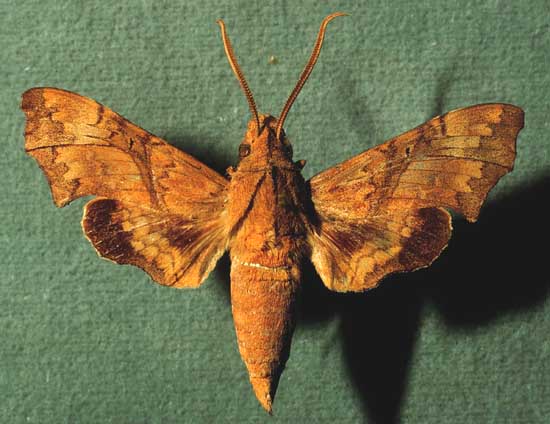
Aleuron neglectum neglectum male, Costa Rica, courtesy of Dan Janzen.
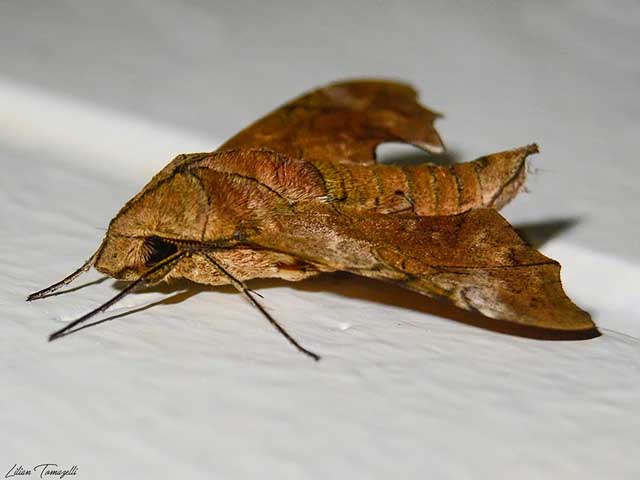
Aleuron neglectum, Mato Grosso, Brazil, courtesy of Lilian Tomazelli.
This site has been created by Bill Oehlke.
Comments, suggestions and/or additional information are welcomed by Bill.
TAXONOMY:
Family: Sphingidae, Latreille, 1802
Subfamily: Macroglossinae, Harris, 1839
Tribe: Dilophonotini, Burmeister, 1878
Genus: Aleuron Hubner, [1819] ...........
Species: neglectum neglectum Rothschild & Jordan, 1903
|
DISTRIBUTION:
Aleuron neglectum neglectum,
(wingspan 48-53 mm), flies in Peru (specimen type locality) and in
Mexico;
Belize: Cayo;
Guatemala (JM);
Costa Rica: Guanacaste, Heredia,
Puntarenas; through
Central
America and much of South America, including northern, central and
southern Venezuela: Amazonas, Aragua, Bolivar;
Trinidad: unconfirmed but might be present; to
Colombia: Mocao (possibly Mocoa in Putamayo); Meta: Villavicencio (GN)
Ecuador;
Peru: Rio Madeira, below San Antonio;
Bolivia: La Paz, Santa Cruz;
Brazil: Amazonas: Manaus (RX); Mato Grosso, and
Argentina: Misiones (ENB).
There are no pearly white lines across the base of the discal cell or
across the first abdominal segment as
there are with A. iphis.
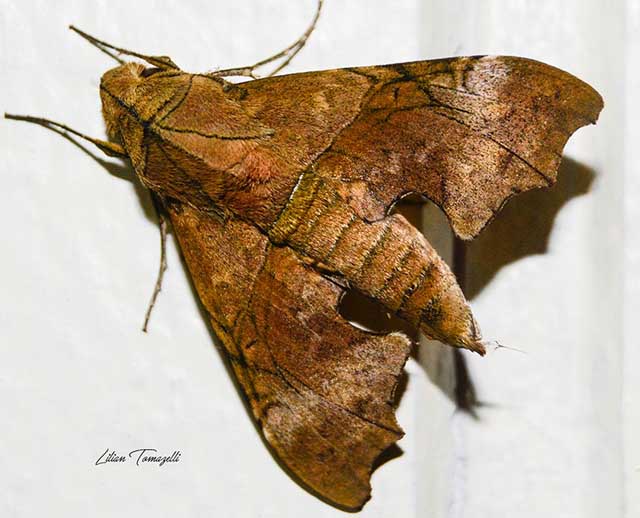
Aleuron neglectum, Mato Grosso, Brazil, courtesy of Lilian Tomazelli.
Extremely similar to Aleuron iphis but most easily separated by the smaller, black (not brown) median patch on the underside of the forewing.
Basal white belt of abdomen upperside much narrower than in Aleuron iphis, the following tergite not brown.
Forewing upperside very similar to Aleuron iphis but differs in the black median lines indistinct posteriorly, except the basal most, which is bordered white
basally but not distally, except at costal margin.
Forewing underside with a smaller, black median patch (brown in Aleuron iphis) that generally does not touch the discal cell, least not between M3 and
CuA1, there being always a spot of the ground-colour at the base of cell M3 - CuA1. CATE
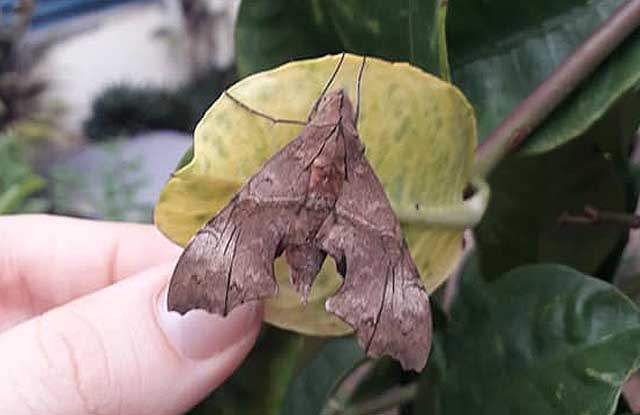
Aleuron neglectum female, Manaus, Amazonas, Brazil,
December, 2019, courtesy of Renata Xavier, id by Jean Haxaire
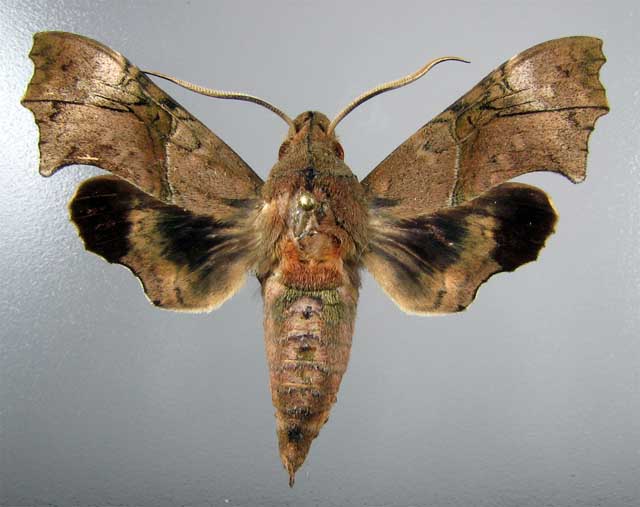
Aleuron neglectum, Villavicencio, Meta, Colombia, July 3, 2011, 500m,
Km 13 via Acacias, LFW = 25 mm, leg. G. Nielsen.
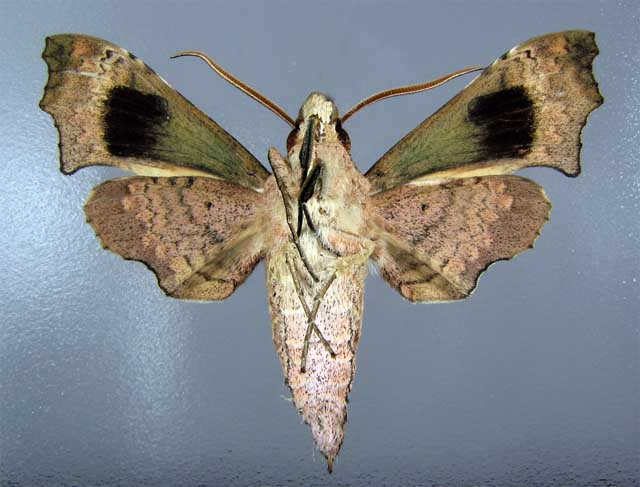
Aleuron neglectum, Villavicencio, Meta, Colombia, July 3, 2011, 500m,
Km 13 via Acacias, LFW = 25 mm, leg. G. Nielsen.
FLIGHT TIMES:
Aleuron neglectum neglectum adults fly at dusk and are not attracted to lights. They do visit puddles
and frequently nectar at flowers of Duranta repens.
In French Guiana adults are on the wing in March, August and October. In Mato Grosso, Brazil flights have been observed in February and May.
Gregory Nielsen reports a July flight in Villavicencio, Meta, Colombia.
ECLOSION:
Adults eclose from pupae formed in shallow subterranean chambers.
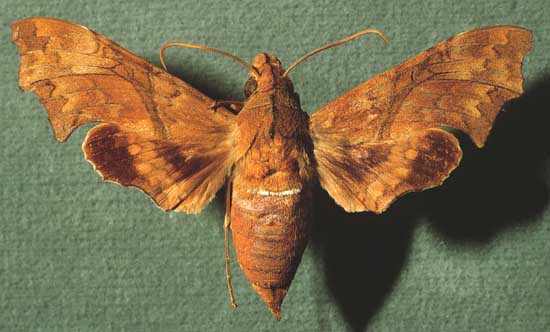
Aleuron neglectum neglectum female courtesy of Dan Janzen.
SCENTING AND MATING:
Females call in the males with a pheromone released from a gland at the tip of the abdomen.
EGGS, LARVAE, PUPAE:
Larvae probably feed on Curatella americana and other members of Dilleniaceae family.
Eurides Furtado reports them on Curatella, Doliocarpus, Davilla nitida and Tetracera.
The larvae have very long "horns"
in the early instars and are green.
Larvae become darker, almost brown, as they mature and anal horn is
greatly diminished.
Larval development takes about 36 days.
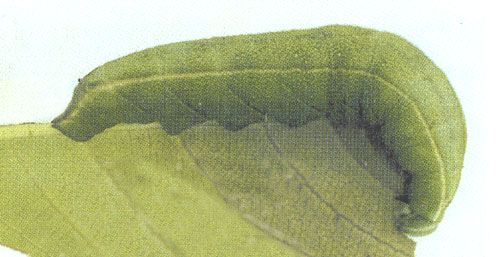
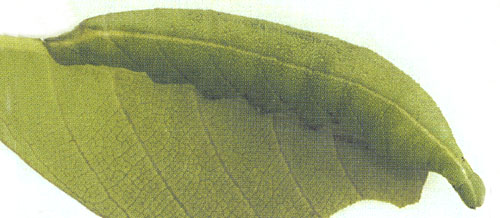
Aleuron neglectum fifth instar courtesy of Eurides Furtado.
Eclosion is approximately 18 days after pupation. The pupae are smooth and shiny. Image courtesy of
Eurides Furtado. | 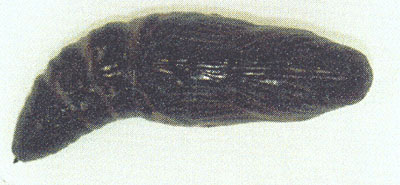 |
Return to Sphingidae Index
Return to Dilophonotini Tribe
Use your browser "Back" button to return to the previous page.
This page is brought to you by Bill Oehlke and the
WLSS. Pages are on space rented from Bizland. If you would like to become a "Patron of the Sphingidae Site", contact Bill.
Please send sightings/images to Bill. I will do my best to respond to requests for identification help.
Enjoy one of nature's wonderments: Live Saturniidae (Giant Silkmoth) cocoons.
 | 
Show appreciation for this site by clicking on flashing butterfly to the left.
The link will take you to a page with links to many insect sites. |











